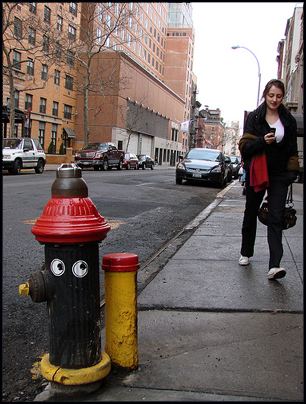
Okay, granted, with movie star biographies you can never really be certain of the facts. Some of those Hollywood people will just say anything, you know? Still, there is no reason to doubt Michael Pitt’s biography, including a phase in which he was a person experiencing homelessness.
At age 16, he took off for the big city, at first renting a room from his acting teacher. In an interview conducted by Max Michaels for Movement Magazine, Pitt said,
Then the apartment thing fell through, and I was on the street for a while. Like um, just kind of panhandling and stuff, ya know?… I was sleeping behind the NYU recreational building, ya know? With a bunch of other kids who had no place to go.
When he started getting work, he shared a one-bedroom apartment with seven roommates, where…
[…] those of us who had mattresses, you had to pack them up in a stack because the whole floor was covered… I sort of just did that for two years.
When Pitt appeared in his first off-Broadway play, there were warrants out for his arrest because of the unpaid fines for things like not having a place to sleep. (Sometimes, it’s just plain illegal to be homeless.) When he was approached by a professional agent who wanted to represent him, the actor thought he was busted.
Pitt is also a musician and his band is called Pagoda. To write a 2005 New York Times profile, Julia Chaplin hung out with the actor/singer/guitarist before a show and learned that his aunt rides a Harley, and that the band’s bassist was, until meeting Pitt, homeless and living in a Portland squat.
In the film Delirious, Pitt plays (very realistically, of course) a character named Toby who describes himself not as homeless, but “moving around right now.” Toby is (just like Pitt in real life) an aspiring actor, who lands the role of a homeless serial killer who only wipes out the deserving. It seems to be some kind of satire on vampire movies. There’s a touching love scene, with a girl who says, “You’ve taught me so much about being homeless…” Pop culture is a strange and wondrous thing.
Hell always has more than one level. Just like most things in life, homelessness has degrees. The life of a technically homeless kid trying to get into show business often includes couch-surfing into some interesting situations that she or he can later write screenplays about. If you’re young and halfway attractive, there will usually be someone willing to put you up for a while. Plus, you’re in New York or Los Angeles, an adventure in itself. The life of a teenager with Academy and Grammy dreams is not quite the same as the life of a homeless, brain-injured combat veteran.
But still, even for the young, brave, and fit, living on the streets can be rough. Sure, there are hope and the vision of a future. There is also enormous risk. After all, what tiny percentage of young actors actually “make it”? You could end up being a hobo for the rest of your life. Or die young. Kids on the street, with immune systems weakened by malnutrition, are vulnerable to catching anything that goes around. They can’t help getting involved in criminal activity, even if it’s such a bum rap as sitting on a sidewalk at the wrong hour. They are vulnerable to rape and worse.
And face it, most kids who live on the streets, in garages, sheds, cars, or abandoned houses are not going to become movie stars. The average kid who is experiencing homelessness needs a suitable environment in which to at least get a high school diploma. Next, he or she needs a job that pays a living wage. Not just any wage. Economic homelessness is when the pay is so low, a person can’t afford a place to live even if they work full-time. More people are in that in-between situation than you might guess. We’re talking about the Universal Living Wage ULW (National Locality Wage – NLW), as described in Looking Up at the Bottom Line. The benefit of the Universal Living Wage ULW (National Locality Wage – NLW) is that it will end homelessness for over 1,000,000 minimum-wage workers, and prevent economic homelessness for all 10.1 million minimum wage workers. Check it out.
Reactions?
Source: “HIP-GNOSIS – interview with actor michael pitt,” MovementMagazine.com, 2002
Source: “Michael Pitt: Indie Nirvana,” NYTimes, 07/17/05
Image by istolethetv, used under its Creative Commons license.
5


